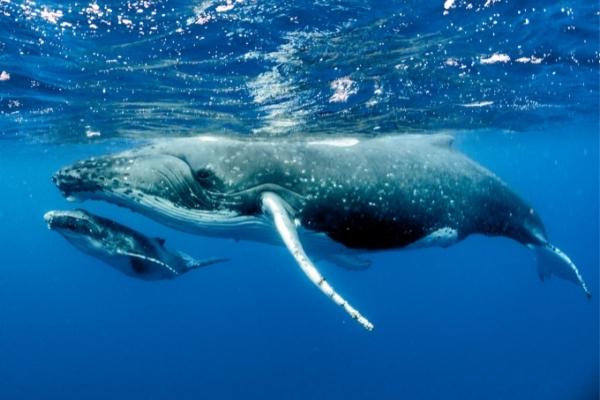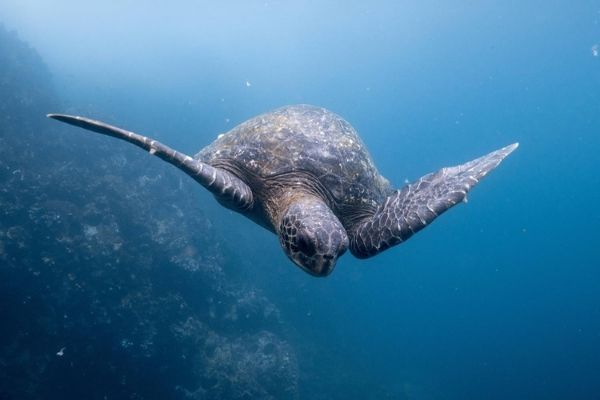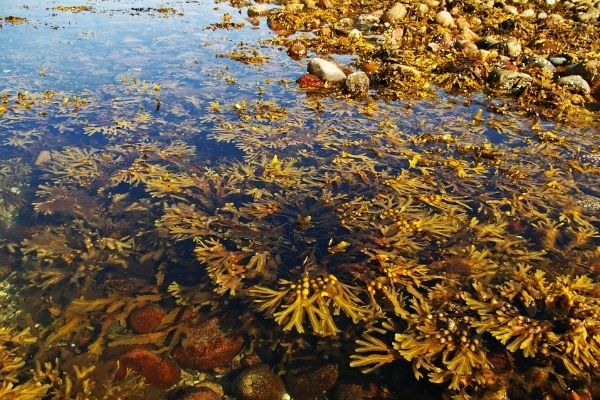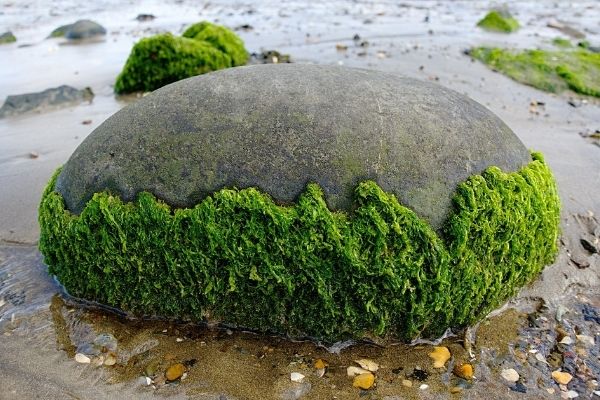Helping Ocean Life to Save the Planet

I’m very sure that like me, everyone reading OnboardOnline has a strong connection with the sea. We all have vibrant personal memories recalling wonderful experiences on the water, whether at work or at our leisure, and often going all the way back in our consciousness to our childhood days.
I have a large National Geographic map of the world on my office wall, and every time I glance at it, I’m reminded of the humongous scale of the oceans which occupy over 70 per cent of the earth’s surface. I still get a kick from picking out locations on the map, where I have been lucky enough to enjoy those special times which are a unique reflection of the boating lifestyle.
Many professional yacht crew reading this will have seen more enchanting places blessed by the ocean currents and maritime climates than I have, but several locations spring readily to mind as I write: The Whitsunday Islands in Australia, the British Virgin Islands in the Caribbean, The Riau Archipelago in Indonesia, Langkawi and Tioman Islands off the coasts of Malyasia, Phuket and the Phi Phi Islands in Thailand, and the Balearics in the Mediterranean.
These days I spend my summers sedately cruising around the inland waterways, lakes and estuaries of the Netherlands, most of the time in fresh water, and sometimes without sunshine!
A totally different experience to any of the above mentioned, but still providing the freedom, relaxation, pleasure and healthy lifestyle that only life on board can offer us.
Why ocean health is essential for global survival
Of course, we all depend on the best possible health, cleanliness and biodiversity of the oceans and waterways in order to maximise the enjoyment of our time afloat. All efforts to maintain and improve these elements are vitally important for the future sustainability of the leisure marine industry. Even more importantly the oceans are undeniably the lungs of the world, and their health is our health. If they die, we die!
To put this into sharper perspective, here are short statements from two renowned ocean conservation warriors who we have mentioned in previous articles:
“Even if you never have the chance to see or touch the ocean, the ocean touches you with every breath you take, every drop of water you drink, every bite you consume. Everyone, everywhere, is inextricably connected to and utterly dependent upon the existence of the sea.” Sylvia Earle - Founder Mission Blue.
“We are at war with the ocean, and if we win this war, we’re going to lose it all, because mankind can’t exist, can’t live on the planet with a dead sea. We depend on it; it's our life blood and we are still so far away from understanding how important the oceans are for us.” Cyrill Rutsch - Founder Parley for the Oceans.
 One of the main environmental focuses in recent years has been on the energy transition path towards ‘net zero’ with ambitious targets to phase out fossil fuels.
One of the main environmental focuses in recent years has been on the energy transition path towards ‘net zero’ with ambitious targets to phase out fossil fuels.
Following what some have called the ‘watered down’ commitments at the COP26 Summit in UK last year, and against a background of stretch targets that were already being criticised as unachievable, surely it’s time to for us all to focus more on how improved stewardship of the oceans can contribute positively to the total climate change mitigation planning, as well as restoring our critical aquatic biodiversity.
Over the last few months, I have come across some interesting studies and informative articles from committed ocean conservation action groups, so I would like to share some key points from a couple of them here.
How whales can help save the oceans
Some readers may have seen that the Water Revolution Foundation has been supporting the IMMA project and helping to raise funds towards it via their connections in the superyacht world. WRF was created to provide the scientific tools for the superyacht industry to reduce its environmental impact and protect the oceans.
They also point out that if you own or operate yacht, or if you are an organisation that relies on what the ocean offers, then it's time to consider what healthy oceans are worth to you. They emphasise that investing in ocean conservation is a systemic, transformative action with a return on investment, and that the IMMA programme is among the most effective that the yachting community can support.
IMMA stands for ‘Important Marine Mammal Areas,’ and the programme aims to support the restoration of balanced aquatic life in the oceans by clearly identifying and supporting the critical IMMAs around the world. This will consider all 130 marine mammal species and contribute to plans that will help them regenerate and thrive. The protection activity list includes whales, dolphins, porpoises, manatees, seals, sea otters and polar bears, and provides information for more sustainable ocean use by shipping and other marine activities.
IMMA use a short illustrative WWF video narrated by environmentalist Sir David Attenborough in order to explain the importance of whales and other mammals in sustaining the growth of Phytoplankton. It confirms that this microscopic floating plant of the high seas naturally soaks up vast quantities of carbon, thus making it a highly effective element in the fight against climate change.
Plankton blooms can be so dense and vast that they can be seen from space - they create as much oxygen as all the world’s forests and grasslands combined! However, they need some natural support because if they sink into the depths and are deprived of light, they cannot grow.
“Enter the whales”, says Attenborough, and this is because they stir up the water with their mighty bodies and fins which causes the plankton to resurface into the sunlight. Such mixing activity by marine mammals, from whales to jellyfish, is locally equivalent to that caused by wind, waves and tides.
 Whales also contribute a lot to the circle of marine life by defecating near the surface. This fertilises the sunlit shallows and fuels further growth of the plankton. The plankton then feeds fish and krill, which in turn feeds the whales. A completely natural circular aquatic support mechanism.
Whales also contribute a lot to the circle of marine life by defecating near the surface. This fertilises the sunlit shallows and fuels further growth of the plankton. The plankton then feeds fish and krill, which in turn feeds the whales. A completely natural circular aquatic support mechanism.
Sadly, these natural occurrences in the marine environment are suppressed by the activities of mankind; typical examples are overfishing and plastic pollution. As we now know, microplastic gets mistaken by marine life as plankton and introduces toxins into the food chain. Attenborough emphasises the urgency for action in straight talking words: “We must control what we take out of the sea, and also what we allow to go back into it.”
Protecting 30 per cent of the world’s oceans is the target for sustainably achieving this objective on an acceptable scale. Identifying IMMAs and using the data to influence international policy and marine conservation practice will be an important step towards reaching that goal.
Ocean based solutions for climate change - using the oceans to store carbon
A report entitled ‘An Ocean of Opportunity’ was published a few months ago by the Woods Hole Oceanographic Institute (WHOI.) Founded in the USA back in 1930, the group consists of almost 1000 scientists, engineers, and technicians pushing the frontiers of ocean research across a wide range of topics related to ocean/earth science and marine policy.
The report principally explores the potential risks and rewards of developing ocean-based solutions to climate change. In the introduction, it reminds us that the oceans are a vast repository for carbon which have already absorbed almost a third of the carbon dioxide that we have pumped into the atmosphere from the burning of fossil fuels. The sequestered carbon can be dissolved into the water, captured by organisms, buried into coastal sediments or immersed into the ocean depths.
A more detailed explanation of how this happens is worth repeating here. The surface ocean and the air above it is constantly exchanging gases, trying to reach an equilibrium. When carbon dioxide is more plentiful in the atmosphere than in the surface waters it diffuses into the ocean.
 Some dissolved carbon dioxide bonds with molecules weathered from rocks or ancient shells, locking it into a new complex form that cannot easily escape back into the atmosphere. Other carbon is dragged to the depths by major ocean currents. These pull warm surface waters laden with carbon dioxide toward the poles where they cool, sink and can remain there for hundreds or thousands of years.
Some dissolved carbon dioxide bonds with molecules weathered from rocks or ancient shells, locking it into a new complex form that cannot easily escape back into the atmosphere. Other carbon is dragged to the depths by major ocean currents. These pull warm surface waters laden with carbon dioxide toward the poles where they cool, sink and can remain there for hundreds or thousands of years.
On the biological side, marine algae play a key role, using dissolved carbon dioxide to conduct photosynthesis. When those phytoplankton and other microorganisms eventually die, they too sink to deeper waters.
According to the latest report released by the Intergovernmental Panel on Climate Change (IPCC), there is emphatically no time to lose in drastically reducing emissions over the next two decades if we are to avoid exceeding the 1.5C global temperature increase target. So, in addition to discontinuing our reliance on fossil fuels, the ultimate success may well depend on finding new ways to remove and store the excess carbon dioxide we have already produced. This could be by enhancing the natural ability of the oceans to absorb and store more carbon.
Adding iron to grow more plankton
Some interesting ideas that the scientists at WHOI are working on include the possibility of artificially introducing the chemical element of iron (Fe) into certain parts of the ocean where the lack of it deters the growth of plankton blooms. Although iron is one of the most abundant elements in the earth’s crust, it is much scarcer in the oceans. In coastal regions it can get unlocked from rock formations as they weather and carry the iron dust into the sea where phytoplankton use it for photosynthesis. On the other hand, aquatic zones further away from large landmasses contain less iron dust, and therefore less fertilisation of plankton blooms take place.
Some small-scale iron fertilisation experiments in the open ocean have already been carried out in order to prove the theory, that artificial infusion of iron successfully creates localised plankton blooms. However further research is still needed to determine how much, if any, of the extra organic material would make it to the deep sea.
Adding alkalinity to replicate geological carbon sequestration
Over very long time scales, nature plays its part via the weathering of rocks, or the dissolving of dead microorganisms. This process releases alkaline molecules which help the ocean to lock away a lot of carbon when the alkaline reacts with carbon dioxide to form carbonate and bicarbonate.
These forms of carbon don’t re-enter the atmosphere so easily, but the climate is warming much faster than nature can create sufficient ocean alkalinity to deal with the problem. So, some scientists are looking at ways to artificially introduce more alkaline in order to increase the ocean’s uptake of C02.
The ideas under investigation include seeding beaches with finely crushed olivine, a rock that weathers quite quickly and can release more alkaline into the sea. Or to scatter alkaline minerals from vessels crossing the oceans. However, these methods need further study and analysis to ensure that they don’t create a harmful unbalance in marine ecosystems.
 Using the seafloor as a carbon storage vault
Using the seafloor as a carbon storage vault
Another idea being studied is to find ways to pump carbon dioxide straight into the crustal ocean rock which sits below the seafloor sediments. Large areas of the ocean crust are made up of volcanic basalt and this has a porous structure which can absorb liquid carbon dioxide. The hydrogeologists working on the concept say that the geochemical reaction between carbon and basalt can eventually form limestone. Therefore, this process can convert the liquid C02 into solid rock, effectively locking it away forever.
Again, this theory has been proven experimentally via land-based basalt formations in Iceland, where the complete mineralisation process took about two years. The scientists suggest that this is fast enough to effectively lock carbon away, but slow enough to diffuse into the structure, and therefore make space for more carbon to be pumped into the vault. They also theorise that the density of the ocean floor sediments would effectively act as a sealing barrier, thus preventing the carbon from escaping before it is completely mineralised.
In conclusion
There is a lot more scientific detail and some other suggested carbon storage methods in this fascinating report, such as creating large seaweed farms, or regenerating seagrass beds, mangroves and salt marshes. But there is one important caveat mentioned which I should finish this overview with: ‘There is no silver bullet for climate change; each carbon storage method will have significant trade-offs and risks which will need to be thoroughly investigated and evaluated before any of these concepts are adopted at scale.’
So, time is not on our side, but neither should we rush into ‘solutions’ that might ultimately create another set of problems in the finely balanced oceanic environment.

Post your comment
You cannot post comments until you have logged in.
Login to post a commentComments
No one has commented on this page yet.
RSS feed for comments on this page | RSS feed for all comments